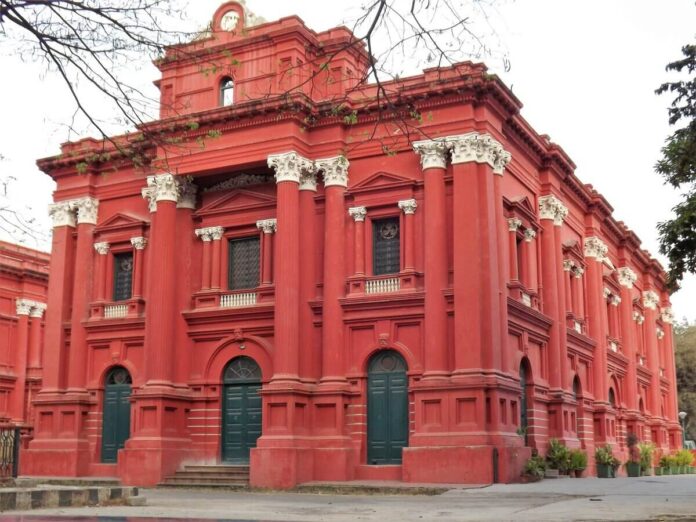The museum hosts a collection of historical artefacts spanning 3,000 years.
Story so far: The Government Museum on Kasturba road is built in a neoclassical Greco-Roman style, a recurring theme in several colonial buildings in the area. The building was designed by Colonel Richard Sankey of the East India Company and is flanked by Greek-style pillars and windows with Roman gods. The museum preserves a collection of historical artefacts that span almost 3,000 years.
- The museum was inaugurated in 1865 by Sir Edward Balfour in the Cantonment Jail. It was subsequently moved to Museum Road, after which it landed where it is today.
Noteworthy: The main gallery features dwarapalaka or door guardian Chalukya sculptures from the 11th Century CE. Archaeological artefacts include items from the Indus Valley Civilisation and Arikamedu. Distinctive Black and Red pottery ware date back to the 10th century BCE.
- The adjoining wing preserves Jain, Chola, and Hoysala sculptures, that date from the 10th to 12th century CE. Some statues, however, are around 2,000 years old.
Why it matters? The museum is one of the oldest in the country. It is a treasure trove of archaeological artefacts that one usually only reads about. The Government Museum captures Bengaluru’s cultural, sociological and historical currents. It also preserves the Halmidi inscription, one of the oldest examples of written Kannada.
Visiting hours: It is open from 10 am to 5 pm on all days of the week, barring Monday. The entry fee is ₹20, and the museum prohibits videography on the premises. Ticket holders can also visit the adjoining Venkatappa Art Gallery.

